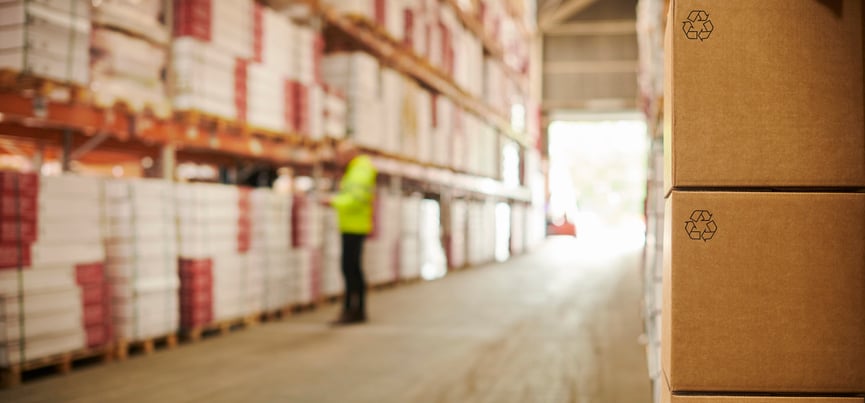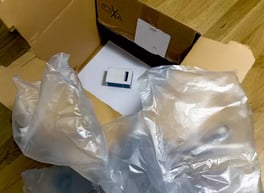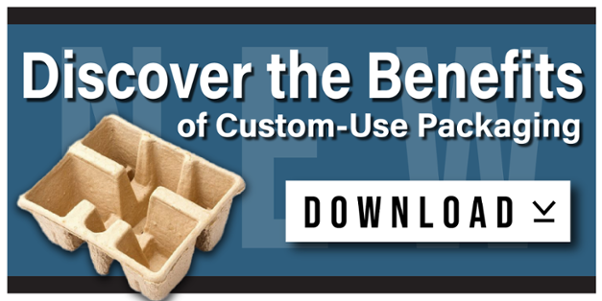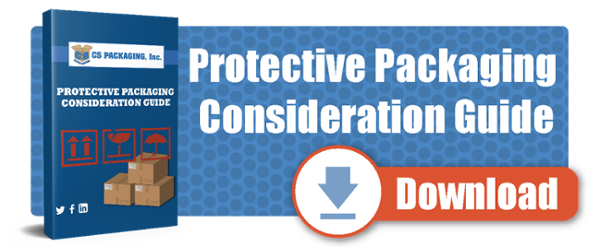
Walk down any aisle of your local supermarket or favorite department store, you’ll see a number of packages in all different shapes and sizes. The same can be said for distribution centers for the shipping industry.
While the products themselves may differ drastically, most of the product's packaging share a common theme: protection and sustainability.
From leading tech manufacturers that produce the highest quality computers, televisions, and cell phones, to the niche manufacturers that may carry one or two products on the shelf, many brands have an eco-pledge. Most consumers are willing to spend more on products and packaging they know won’t hurt the environment (but more on that later).
But with sustainability trending in the mainstream, the sustainable packaging industry has become a haven for misleading information and deceptive practices. As such, understanding what makes a package sustainable, and identifying those that are truly not, can be challenging.
That’s why we’ve created this guide to help define sustainable packaging practices and identify the foes.
In this guide you’ll be able to:
- Define what sustainable packaging is and isn't
- Understand the importance and impact that sustainable packaging has on brand-image
- Identify the hoaxes in the sustainable packaging industry
What is Sustainable Packaging?
Think about the last 10 years -- throughout that span of time, your favorite products may have gotten a refreshed design, new logo, or even a new name; but something else that’s changed drastically is the way these products are packaged, and the function of their packages.
Seen on a global scale, the push for greater environmental awareness and eco-friendly product packaging has brought substantial changes to product packaging from brands small to large.
But the question still stands: How can we properly identify sustainable packaging?
To answer this question, we need to look at 3 different areas:
- Packaging Material Type
- Packaging Use-Case
- Packaging Products Reusability
To achieve maximum sustainability, it’s crucial to understand each area individually as well as their impact on the entire product packaging apparatus.
Packaging Material Type:
When trying to identify truly sustainable packaging practices, it’s important to have a full understanding of what sustainable materials are, and what they are not.
At a base level, identifying a material's recyclability is important. Some types of packaging materials and fillers are inherently more recyclable than others. For instance, most cardboard (corrugated and not), cardstock, tissue paper, and paper fill are fully recyclable, and most types of corrugated are made with up 70% recycled materials.
Some plastic materials are also considered recyclable, although any biodegradable* plastics cannot be recycled as they would cause structural defects in products where both biodegradable and recyclable materials are used.
*A note on biodegradability - Don’t be fooled by brands touting biodegradable materials as their main sustainability point. While biodegradability is a step in the right direction, it’s often not a dynamic term, meaning it could (and will) be many years before a biodegradable plastic fully breaks down.
While the base materials won’t be harmful to their surrounding environments, they can still last decades or longer in a landfill and cause serious short-term capacity issues.
Leading manufacturers have invested heavily in their packaging materials as consumers become increasingly more aware of the environmental impacts their purchases have.
According to a 2021 FirstInsight study on Gen Z purchasing habits, over 70% of Generation Z is willing to pay for more sustainable items, the majority of which are willing to pay a 10% price premium.
But sustainability goes further than eco-friendly packaging materials, it also deals with how those materials are used.
Packaging Use Cases
It’s important to remember that the most sustainable and cost-effective packaging will always be what gets the item to the destination safely.

Returns due to damages or busted packaging are not only expensive, but they also incur a larger carbon footprint with added transportation and added packaging to re-ship the item.
Sometimes sustainability is also choosing the lesser of two evils, for instance, incorporating a thin plastic insert into a fragile package may be a more efficient and cost-effective solution to achieving safe shipping than 10x that amount of packaging paper.
Common examples of these types of sustainable packaging decisions can be found in the electronic component industry, where corrugated inserts are used to secure valuable items during transit. While foam or an increased amount of paper-fill may also be suitable options, true sustainability comes from utilizing the least amount of packaging material with a similar level of protection as the other more material-intense options.
From custom-size corrugated materials to unique inserts, custom-use packaging can be found in a variety of industries. Choosing the right type, however, can get confusing. That's why we've created the free guide below to answer any questions you may have about custom-use protective packaging:
Is the Package Reusable?
While most consumer packaging is meant to be either recycled or thrown away, industrial or Business to Business (B2B) packaging often includes re-useable packaging elements.
The best examples of these types of packaging can be found in nearly every grocery store and gas station across the country: milk and soda crates. .webp?width=290&height=236&name=istock-184910083%20(1).webp)
These crates can be either flat (for milk) or partitioned for bottles of soda to sit directly into. Not only do the crates keep the products undamaged while in transit, but they also allow for a greater number of units to be shipped on one pallet load, reducing the carbon footprint of each bottle.
Since consumers don’t purchase these crates, distributors are able to collect and reuse them in future shipments.
For consumers, sometimes product packaging is meant to be repurposed or reused in their homes. Examples of this include leading computer manufacturers with specialized packaging that can be used as computer stands or even popular cereal brands whose boxes turn into board games for their younger consumers.
Now that we’ve covered the basics of what eco-friendly packaging is and isn’t, let’s look at how it affects brand image and customer retention.
How Sustainable Packaging Affects Brand Image
Pandemic times withstanding, would it surprise you to learn that over two-thirds of consumers think it’s important to buy products that have recyclable packaging?
According to Trivium Packaging’s 2021 Global Buying Green Report, which surveys 15,000 consumers throughout several countries, 67% of consumers reported being more environmentally aware of their purchases and the impacts the packaging has on the environment.
With this push towards eco-friendly packaging options, many major manufacturers are testing packaging that uses more environmentally friendly materials like corrugated or paper.

This can be seen firsthand in the food industry, where sustainable food packaging is becoming ever more popular.
Consider the Boxed Water company - their water is packaged in a cardboard-like material and has a cap made from pine tree waste, making it 92% recyclable.
We’ve also seen some of our favorite childhood brands testing more-recyclable packages for individual-sized microwaveable macaroni and cheese and more.
The cosmetics industry as a whole has recently taken the growing demand for sustainable packaging head-on. With some industry experts claiming there are deceptive practices surrounding sustainable packaging, brand owners and designers are calling for more transparency in their packaging processes.
It’s easy to see the growing importance for brands to integrate sustainable packaging processes, but how can we identify those are misleading or otherwise false?
Sustainable Packaging by Means of Stratagem | Identifying the Hoaxes:
It’s no secret that product packaging is oftentimes much more complex than consumers think. With a plethora of packaging types, sizes, and options, brands can easily deploy a deceptive sustainable packaging stratagem. Therefore it can get challenging to identify what is truly sustainable and what is not.
When working with a packaging company, it’s imperative to understand if something is truly eco-friendly or just has grabby marketing. In other terms, if the company can provide a bio-assimilation certificate that certifies just how long it actually takes the materials to biodegrade.
Naturally, with different types of packaging materials come different levels of recyclability and reusability. It’s important to be clear on whether a package simply has a recycle symbol stamped or printed on it (even if it’s not truly recyclable) if it can be dropped off at a store to be recycled, or go directly into the curbside recycle bin.
Promoting clarity for each level of these types of material is the only way to ensure your brand won’t get hit with a deceptive-practices lawsuit.
Working with an advanced packaging provider that has reputable experience dealing with sustainable packaging materials is also of paramount importance.
Benefits of Working with an Advance Sustainable Packaging Provider
Sustainable packaging isn’t just another buzzword -consumers are passionate about protecting the environment and reducing waste. To stay competitive and relevant in the ever-changing product markets, brands need to invest serious capital into their product packaging and branding to ensure their customers are getting the best level of protection with the most eco-friendly materials.
Working with an advanced sustainable packaging provider can help bring clarity and guidance on how to expertly package goods and which type of eco-friendly packaging materials to choose.
Don’t let another packaging company push you around. Contact the packaging experts at CS Packaging today to get started designing your sustainable packaging solution.
Want to learn more about protective packaging instead? Download our free protective packaging guidelines today below:
(Editor's note: This blog was originally published in April 2022 and was updated in June 2023 to reflect the most up-to-date information.)
.png?width=845&height=137&name=Slice%203%20(23).png)
